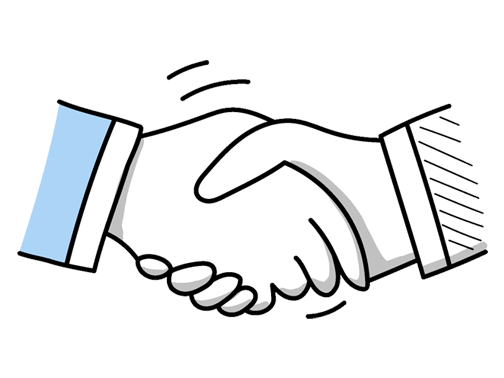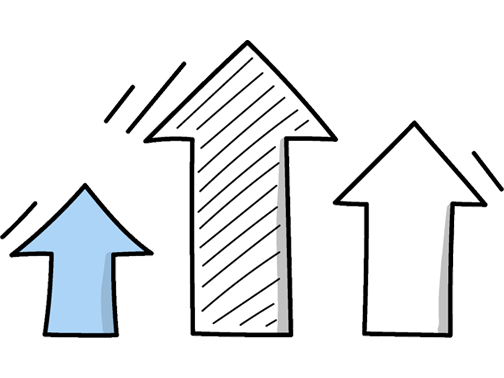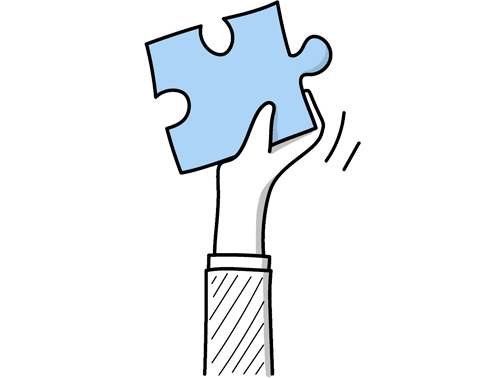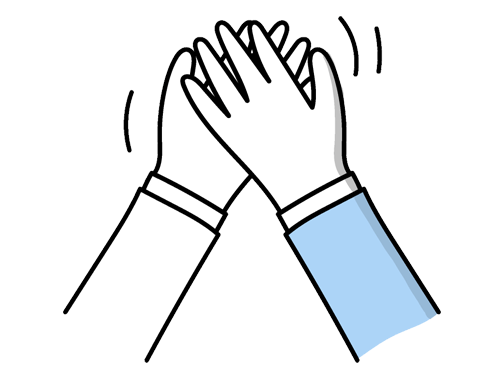Retail Space Planner Interview Questions (2025 Guide)
Find out common Retail Space Planner questions, how to answer, and tips for your next job interview
Practice Interviews Online - Identify your strengths and weakness in a realistic Retail Space Planner mock interview, under 10 minutes
Practice Now »Retail Space Planner Interview Questions
Employers ask this question to see how you handle pressure and stay effective when deadlines and demands pile up. You need to explain how you prioritize urgent tasks, keep a calm mindset, and use practical strategies like taking breaks or organizing your work to manage stress and maintain productivity.
Example: When deadlines tighten, I focus on breaking down tasks by urgency, which helps me keep clear priorities and avoid feeling overwhelmed. Staying calm and positive lets me adapt quickly if things change. I also find short breaks and simple breathing exercises really help me reset and stay sharp. For example, during a busy store layout revamp, this approach kept me on track without losing sight of quality.
This question assesses your understanding of essential legal and safety requirements in retail design to ensure compliance and protect customers. You need to explain your knowledge of UK building codes and regulations, describe how you apply them to meet safety and accessibility standards, and highlight how you keep updated through training or professional development.
Example: I have a solid understanding of UK building codes and retail standards, which I regularly reference to ensure all layouts meet safety and accessibility requirements. For example, I’ve worked closely with the latest fire safety regulations when planning store designs. I keep myself informed through industry newsletters and attending relevant workshops, so I’m confident in adapting plans as regulations evolve to maintain full compliance.
Questions like this help interviewers understand your flexibility and problem-solving skills when faced with unexpected changes. In your answer, clearly explain how you quickly reviewed the new requirements, adjusted your planning accordingly, and kept open communication with clients and your team to ensure everyone stayed aligned.
Example: In a previous project, the client shifted their focus from maximizing product display to enhancing customer flow. I took time to fully grasp their new priorities, then adjusted the layout to create clearer pathways while maintaining visual appeal. Throughout, I kept regular conversations with both the client and my team to ensure everyone was aligned, which helped us deliver a design that met expectations despite the shift.
What they want to know is how proactive and resourceful you are in keeping your skills current in a fast-evolving field. You need to say that you regularly follow industry publications, attend relevant workshops or webinars, and engage with professional networks to stay informed.
Example: I make it a habit to regularly read industry magazines and follow retail design blogs to keep a finger on the pulse of new trends. Attending trade shows and networking events also helps me see how technology is shaping store layouts in real time. For example, I recently explored how augmented reality is being used to create more interactive shopping experiences, which sparked some ideas I’m excited to apply.
Hiring managers ask this question to see how you handle pressure and manage time effectively while maintaining clear communication and problem-solving skills. In your answer, explain how you prioritized tasks, adapted plans when challenges emerged, and kept your team updated to successfully meet the deadline.
Example: In a recent project, we had just days to redesign a retail layout before a product launch. I prioritized tasks, stayed flexible when unexpected issues came up, and kept the team updated regularly. By breaking down the work and maintaining clear communication, we met the deadline without compromising quality, which ultimately helped drive foot traffic on opening day.
Questions like this assess your ability to make technical ideas accessible and ensure collaboration with diverse teams. You should say that you simplify complex concepts using everyday analogies, support explanations with clear visuals like floor plans or sketches, and actively listen to address stakeholder concerns.
Example: When sharing space planning ideas with non-technical stakeholders, I focus on breaking down concepts into everyday language and supporting them with clear visuals like sketches or simple diagrams. I find it helps to encourage questions and listen carefully to feedback, which often highlights concerns or ideas I hadn’t considered. For example, showing a before-and-after layout can make changes much easier to understand and discuss.
Hiring managers ask this question to understand how you manage your time and resources effectively when juggling multiple projects. You need to explain that you prioritize tasks by assessing each project's urgency and impact, allocate specific time blocks accordingly, and maintain clear communication with your team and stakeholders to keep everyone updated.
Example: When juggling several space planning projects, I start by understanding each deadline and impact, then break tasks into manageable steps. I keep the team updated regularly to ensure everyone’s aligned and can adjust as needed. If a sudden change arises, I reassess priorities and shift focus accordingly. For example, during a past project, when one store's opening date moved up, I quickly reorganised my workload to meet the new timeline without compromising quality.
This interview question helps the employer understand how you handle real-world problems and apply your skills in retail space planning. You need to clearly describe a specific challenge you faced, explain the steps you took to solve it, and mention any positive results or lessons learned from the experience.
Example: One of the toughest projects was redesigning a busy high street store with limited space and tight deadlines. Balancing customer flow while incorporating new product lines required creative zoning and close teamwork. I regularly coordinated with suppliers and used customer feedback to fine-tune layouts. The result was a 15% sales uplift and smoother shopping experience, which taught me the value of flexibility and ongoing collaboration.
Employers ask this question to see if you are open to collaboration and can use feedback constructively to improve your designs. You need to say that you listen carefully, ask questions to fully understand the feedback, and then adjust your plans to better meet client or team needs while explaining how this improved the final result.
Example: I see feedback as a valuable part of the design process. When clients or colleagues share their thoughts, I listen carefully, ask questions to understand their perspective, and explain my ideas clearly. This way, we can collaborate to refine the space and make it even better. For example, once a client suggested a layout change that initially seemed challenging, but after discussing, it improved flow and customer experience.
This question aims to see if you recognize how personal biases can skew your planning and affect results. You should explain that you rely on objective data like customer demographics and sales figures, reflect on past decisions to identify biases, and actively seek training or feedback to improve your approach.
Example: I’m aware that personal preferences can unintentionally influence decisions, so I rely heavily on data and customer insights to guide my planning. I regularly seek feedback from colleagues to challenge my assumptions and stay open to new ideas. For example, when a layout I preferred wasn’t performing well, input from the team helped me adjust it for better flow and sales, reinforcing the value of diverse perspectives.
Questions like this assess your ability to create visually appealing spaces that also serve practical purposes, which is crucial in retail planning. You need to explain a specific example where you successfully balanced design and usability, highlighting how you prioritized both customer experience and operational efficiency.
Example: In a recent project, I redesigned a boutique layout where customers loved stylish displays, but it limited movement. I adjusted shelving heights and created clear pathways, maintaining the visual appeal while improving flow. This balance helped increase customer comfort without compromising the brand’s aesthetic, showing how thoughtful design can serve both form and function in retail spaces.
This interview question aims to assess your communication and problem-solving skills in a team setting. You need to briefly describe the conflict, explain how you listened to all sides, and share the positive outcome you helped achieve.
Example: In a previous role, two team members disagreed on how to layout a new store section. I listened to both perspectives, encouraged open discussion, and guided them to blend ideas. This not only resolved the conflict but also improved the final plan, showing that collaboration often leads to better results than sticking to one viewpoint.
This question aims to assess your ability to use data-driven insights to maximize retail space effectiveness. You need to explain how you collect and analyze sales data using tools like POS systems, describe how you apply these insights to optimize product placement, and show how you measure the impact of your changes to make continuous improvements.
Example: When analyzing sales data, I start by gathering detailed product performance metrics and foot traffic patterns. Using this information, I identify which areas drive sales and which don’t. For example, if a category underperforms, I might reallocate space or reposition products to boost visibility. After making adjustments, I monitor sales trends closely to see the impact and refine the layout further, ensuring the space is both efficient and customer-friendly.
This interview question is designed to assess your problem-solving skills and attention to detail in optimizing store layouts. You need to explain how you analyze traffic flow and sales data to spot issues, then describe how you implement changes to improve customer experience and sales efficiency.
Example: When I notice a layout isn’t working, I start by observing customer flow and gathering sales data to spot problem areas. Then, I experiment with rearranging key displays or adjusting aisle widths to improve movement and visibility. For example, in a previous role, shifting seasonal items closer to the entrance boosted engagement and sales, which showed how small changes can make a big difference in efficiency.
This question assesses your ability to manage relationships and ensure projects run smoothly through clear communication. You need to explain that you provide detailed briefs, maintain regular updates, and promptly resolve any issues with contractors and vendors to keep everyone aligned.
Example: I make sure everyone’s on the same page by clearly outlining what’s needed from the start and keeping communication channels open throughout the project. I check in regularly, whether by calls, emails, or quick site visits, to address any issues early. For example, when a delivery was delayed last year, staying in close touch helped us quickly adjust schedules without impacting the overall timeline.
What they want to understand is how you maintain high standards to avoid costly mistakes in retail layouts. You need to explain that you double-check measurements by cross-referencing with the site, use CAD software for precision, and collaborate with your team through reviews to ensure accuracy.
Example: To make sure floor plans are spot-on, I start by carefully measuring twice and cross-checking dimensions. I rely on software like AutoCAD to draft precise layouts, which helps catch errors early. I also find it useful to share drafts with colleagues or clients for fresh eyes and feedback, ensuring the final plan meets everyone’s expectations. This teamwork helps avoid costly mistakes down the line.
This interview question helps the employer understand your practical experience and problem-solving skills in retail space planning. You need to clearly describe a specific project, highlighting the challenge, your approach, and the positive outcome or impact it had on sales or customer experience.
Example: Certainly. In my last role, I redesigned a high-traffic store layout to improve customer flow and visibility. By reallocating key product displays and creating clearer pathways, sales in targeted departments increased by 15% within three months. It was rewarding to see how thoughtful space planning not only enhanced the shopping experience but also directly supported the store’s performance goals.
Hiring managers ask this to see how you handle pressure and problem-solving on the spot, which is crucial in retail space planning where unexpected changes often occur. You need to explain the situation briefly, the quick decision you made to optimize the space, and the positive result it had on the project or store performance.
Example: During a store refresh, a last-minute delivery exceeded allocated shelf space. I quickly reassessed the layout, shifting non-essential displays to create room without disrupting customer flow. This decision kept the launch on schedule and maintained a tidy, appealing environment. It was a great reminder that staying flexible and calm helps solve unexpected challenges efficiently.
Hiring managers ask this question to see how you use data visualization to communicate complex space plans clearly. You need to explain a specific example where you used tools like CAD or Tableau to create visuals that helped stakeholders understand and approve your proposals.
Example: In my last role, I used tools like Tableau to create clear, interactive floor plan visuals. This helped the team see customer flow and product placement effects more intuitively. For example, I presented a proposal showing how rearranging key categories boosted sales, which made it easier for stakeholders to understand the impact and support the changes. Using data visuals really turns complex info into something everyone can grasp quickly.
This question aims to see how you take initiative, collaborate, and solve problems to ensure project success beyond your basic duties. You need to describe a specific example where you took extra steps, worked well with others, and overcame challenges to deliver a successful space planning project.
Example: In a recent project, I noticed early design plans didn’t fully consider customer flow, so I volunteered to run extra walkthroughs and gathered feedback from store staff. Collaborating closely with the visual merchandiser, we adjusted layouts to boost product visibility and ease movement. This hands-on approach helped improve sales and created a space everyone felt confident in. It was rewarding to see how small tweaks made a big difference.
Employers ask this to see how you analyze problems and improve sales through layout design. You need to say you would gather sales data, observe customer behavior, identify bottlenecks, and then redesign the layout to enhance flow and product visibility.
Example: If a store’s layout isn’t driving sales, I’d start by analysing customer flow and feedback to identify pain points. For example, I might notice key products tucked away or bottlenecks near checkouts. From there, I’d experiment with adjusting fixture placement and signage to enhance visibility and ease of navigation, tracking the impact through sales data. It’s about creating a space that feels intuitive and encourages customers to explore more naturally.
What they want to understand is how you integrate design and customer behavior to create appealing, functional retail spaces. You need to say that you use visual merchandising principles to strategically arrange products and displays that attract attention, guide customer flow, and enhance the shopping experience.
Example: When planning retail space, I focus on creating flow that guides customers naturally through the store, using sightlines and focal points to draw attention to key products. I balance colours and textures to make displays inviting and easy to navigate. For example, placing seasonal items at eye level encourages engagement, while keeping aisles clear ensures a comfortable shopping experience. It’s about making the space both functional and appealing.
Hiring managers ask this to understand your versatility and how you customize plans for different retail settings. You need to briefly describe the types of stores you’ve worked in and explain how you adjusted your strategies to fit each environment, highlighting the positive results of those changes.
Example: I’ve worked across high street fashion stores, supermarkets, and boutique shops, each demanding a unique approach. For example, in supermarkets, I focused on clear signage and logical flow to speed up customer journeys, while in boutiques, I emphasized creating inviting, experiential layouts. These adjustments helped boost foot traffic and improved overall customer satisfaction by making every space feel purposeful and welcoming.
Questions like this assess your technical skills and how you apply them to improve retail environments. In your answer, clearly state your experience using software like AutoCAD or Revit and give examples of how you use these tools to create efficient layouts that enhance customer flow and maximize space.
Example: I've used AutoCAD extensively to layout retail spaces, ensuring efficient flow and maximising display areas. In one project, I adjusted floor plans to improve customer navigation, which boosted dwell time. When technical issues arise, I troubleshoot by checking layers and coordinates carefully, often consulting online resources or forums. While I’m also familiar with Revit, I tend to choose the software best suited for the task at hand.
Hiring managers ask this question to assess your teamwork skills and how you contribute to group projects, which are crucial in retail space planning. In your answer, clearly explain your specific role in the team and how you worked with others to achieve the project goals.
Example: In a previous role, I worked closely with the merchandising and marketing teams to redesign a store layout. My role was to translate their ideas into practical space plans that improved customer flow while maximizing product visibility. We collaborated regularly, sharing feedback to balance aesthetics with functionality, which ultimately boosted sales and created a more inviting shopping experience. It was a great example of teamwork driving effective results.
Ace your next Retail Space Planner interview with even more questions and answers
Common Interview Questions To Expect
The interviewer is looking for your motivation, passion, and understanding of the role. You can answer by discussing your relevant skills, experience, and how the role aligns with your career goals.
Example: I am interested in this role because I have a strong background in spatial design and a passion for creating visually appealing retail spaces. I believe my skills in space planning and merchandising will allow me to excel in this position. This role aligns perfectly with my career goals of combining my creativity with my love for retail.
The interviewer is looking for a candidate to demonstrate their qualifications, skills, experience, and passion for the role. Answers should highlight relevant achievements and how they align with the company's needs.
Example: I believe my experience in retail space planning, along with my strong attention to detail and creativity, make me a great fit for this position. I have successfully optimized store layouts to increase sales and improve customer flow in my previous roles. I am excited about the opportunity to bring my expertise to your team and help drive success for the company.
The interviewer is looking for insight into your long-term aspirations and how they align with the company's goals. Be honest, specific, and show ambition.
Example: My career goal is to continue growing in the field of retail space planning, eventually becoming a senior space planner or even a manager. I am excited about the opportunity to contribute to the company's success and help drive innovation in the retail industry. Ultimately, I aim to make a significant impact in the field and advance my career to new heights.
Interviewers are looking for honesty, professionalism, and a positive attitude in your response. Be prepared to explain any reasons for leaving your previous job in a constructive manner.
Example: I left my last job because I was looking for new challenges and opportunities for growth in my career. I felt like I had reached a plateau in my role and wanted to explore different aspects of the industry. I am excited about the potential to bring my skills and experience to a new team and make a positive impact.
The interviewer is looking for examples of how you prioritize tasks, manage your time effectively, and handle stress in a fast-paced environment. Be prepared to provide specific examples from your past experiences.
Example: Yes, I am definitely able to handle multiple responsibilities at once. In my previous role as a retail space planner, I was constantly juggling various projects, deadlines, and client requests. I developed strong time management skills and learned how to prioritize tasks effectively to ensure everything was completed on time.
Company Research Tips
The company's official website is a goldmine of information. Look for details about the company's history, mission, vision, and values. Pay special attention to the 'About Us', 'Our Team', and 'News' sections. These can provide insights into the company culture, key personnel, and recent developments. For a Retail Space Planner role, understanding the company's retail strategy and store layout can be particularly useful.
Tip: Don't just skim through the website. Take notes and think about how the information you find relates to the role you're applying for.
Social media platforms like LinkedIn, Facebook, Twitter, and Instagram can provide valuable insights into the company's culture, events, and customer engagement strategies. Look at the content they post, the way they interact with customers, and the feedback they receive. For a Retail Space Planner role, you might find posts about store openings, renovations, or promotional events particularly interesting.
Tip: Follow the company on social media platforms to stay updated with their latest news and activities.
Understanding the company's competitors can give you a broader view of the industry and the company's position within it. Look for information about the competitors' strategies, strengths, and weaknesses. For a Retail Space Planner role, you might want to compare store layouts and space utilization strategies.
Tip: Use tools like Google and industry-specific databases to find information about competitors.
Stay updated with the latest trends in the retail industry. This can help you understand the challenges and opportunities the company might be facing. For a Retail Space Planner role, you might want to look at trends in store design, customer behavior, and retail technology.
Tip: Subscribe to industry newsletters and follow relevant blogs and forums to stay updated with the latest trends.
The job description can provide valuable insights into what the company is looking for in a candidate. Look for specific skills, experiences, and qualifications mentioned in the description. For a Retail Space Planner role, you might want to focus on skills like spatial awareness, creativity, and knowledge of retail operations.
Tip: Use the job description as a guide to tailor your interview responses. Highlight the skills and experiences that match the requirements.
What to wear to an Retail Space Planner interview
- Smart casual attire
- Clean, pressed trousers or skirt
- Polished shoes, not too flashy
- Neutral colours are preferable
- Avoid excessive jewellery
- Light makeup and neat hairstyle
- Carry a professional bag or briefcase
- Wear a blazer if it's a formal company
- Avoid jeans and sneakers
- Ensure clothes fit well, not too tight





